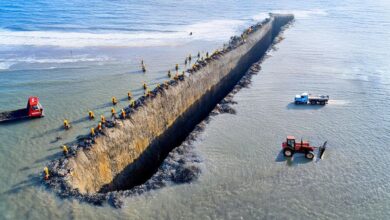USGS: Powerful 7.1-Magnitude Earthquake Strikes Five Countries
USGS: Powerful Earthquake Strikes Five Countries

The ground beneath us has unleashed its fury. An intense earthquake has shaken five nations: China, Bangladesh, India, Nepal, and Bhutan. As communities grapple with the aftermath, scientists are sounding the alarm—could this seismic event be a prelude to something even more devastating?
Seismic activity continues to unfold in the region near Nepal following the powerful earthquake earlier in the day. This tectonic upheaval has triggered a cascade of aftershocks, characteristic of the region’s dynamic geological environment. Nestled near Mount Everest, the area lies along a major plate boundary where immense tectonic forces converge, giving rise to the majestic Himalayas. This setting is a hotspot for stress and strain, constantly shaping the landscape through its restless energy.
The earthquake occurred at a shallow depth around the late afternoon on Monday. Fortunately, the epicenter was located away from densely populated urban centers, minimizing the potential for catastrophic human impact. Despite this, the tremors were widely felt, with reports of shaking extending into India. The United States Geological Survey indicates a broad distribution of shaking intensity across the region. Interestingly, a smaller foreshock preceded the main quake by about an hour. This sequence hints at the intricate interplay of tectonic stress in the region.

Following the main event, aftershocks and related seismic activity suggest a heightened state of tectonic strain. These patterns underline the immense geological forces at work beneath this awe-inspiring mountainous landscape. The earthquake is the most significant to strike this area since a year marked by devastating seismic events, including several powerful quakes and subsequent aftershocks. Those events left a lasting impact on the region, reshaping lives and the physical environment alike.
This earthquake is significant, particularly given its location further north than previous major quakes in the region. While the devastating earthquakes of earlier years occurred further south along the plate boundary, this event strikes closer to a seismic gap. This area, due north of a massive earthquake nearly a century ago, has become a focal point for geological scrutiny, as the buildup of tectonic stress hints at the possibility of future activity.
.jpg&w=3840&q=75)
The seismic sequence following the earthquake has been intense, with multiple recorded events so far. A foreshock preceded the main event, and the largest aftershock occurred just minutes after the primary quake. Smaller tremors continue to ripple through the region, underscoring the heightened activity along this volatile section of the plate boundary. Globally, the lack of massive earthquakes over recent years raises questions. Historically, such events occur at least once annually, but the most recent one was recorded a few years ago. This gap suggests a significant amount of energy may be accumulating in Earth’s fault systems, potentially setting the stage for a major release.
Could this region, with its seismic history and current activity, be where the next major earthquake unfolds? The world watches with a mix of trepidation and scientific curiosity. The power of nature is on full display here—a stark reminder of the ever-present dynamics beneath our feet. As aftershocks continue and patterns evolve, the possibility of a larger quake looms, demanding vigilance and preparedness.
The great Chilean earthquake of the past remains a defining moment in Earth’s history, holding the record as the most powerful earthquake ever documented. This seismic event was not just a geological phenomenon; it was a story of destruction, resilience, and the awe-inspiring power of nature. It began subtly, with a rumble that many dismissed as minor, but within moments, the ground’s fury became unmistakable. Entire landscapes shifted violently, coastal cities bore the brunt of devastation, and tsunamis swept across the Pacific, leaving a trail of destruction.
The toll was immense, with lives lost, communities shattered, and landscapes irrevocably changed. Yet amid the chaos, the event reshaped scientific understanding of earthquakes. It helped solidify the theory of plate tectonics and provided researchers with a rare opportunity to study the planet’s inner layers, refining methods for measuring and predicting earthquakes.
For the people of Chile, however, it was a deeply personal tragedy. Families were torn apart, and communities had to rebuild and adapt. Their story is a testament to human endurance in the face of nature’s most fearsome displays of power.
Earthquakes are one of nature’s most powerful and mysterious phenomena. Their sheer force can reshape landscapes and alter lives in seconds. To understand these events, scientists rely on precise measurements of earthquake magnitude, energy release, and shaking intensity. Advances in technology have allowed for more accurate and comprehensive methods, helping us better understand these immense geological forces.
As we continue to monitor seismic activity worldwide, it serves as a stark reminder of the planet’s dynamic nature. The forces beneath our feet shape our world in profound ways, and staying vigilant and prepared is essential in the face of such unpredictability.








